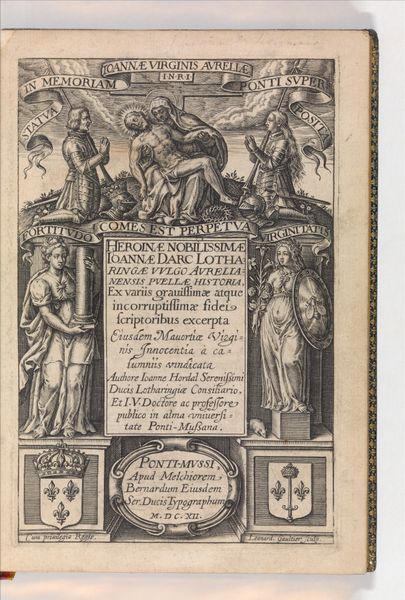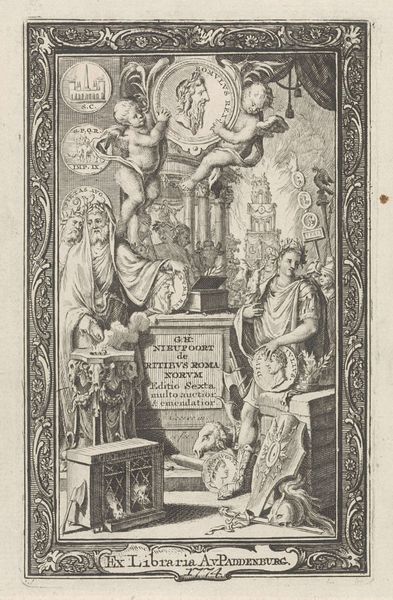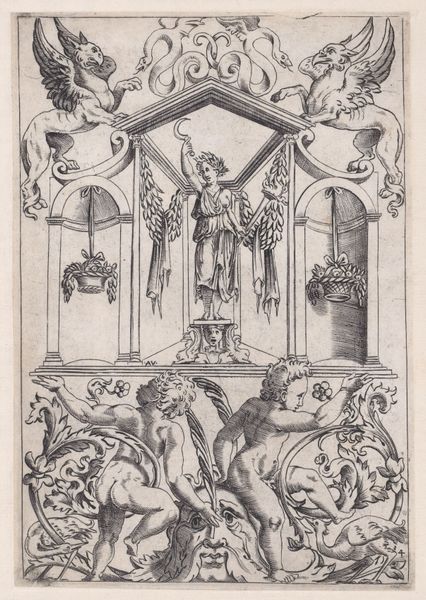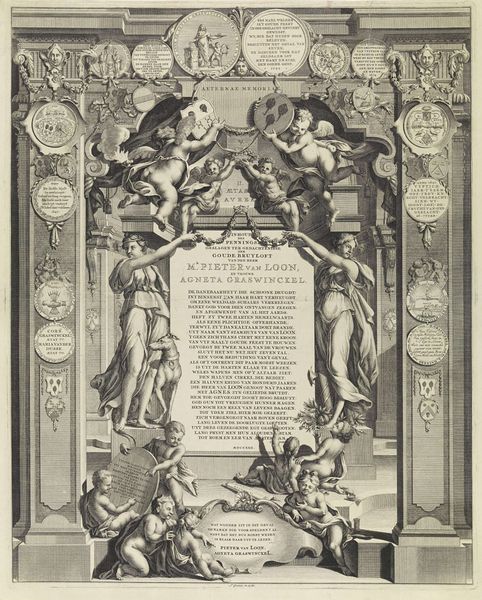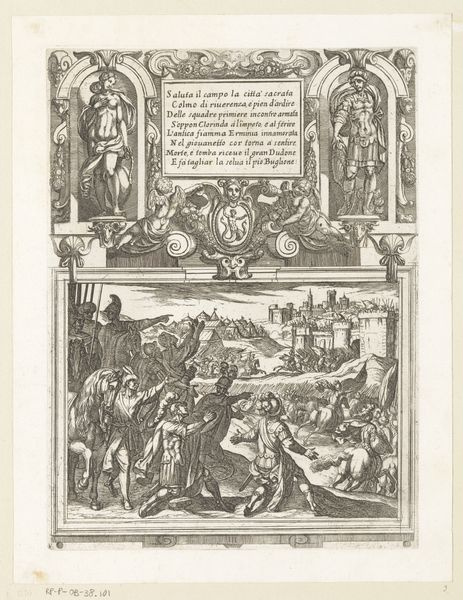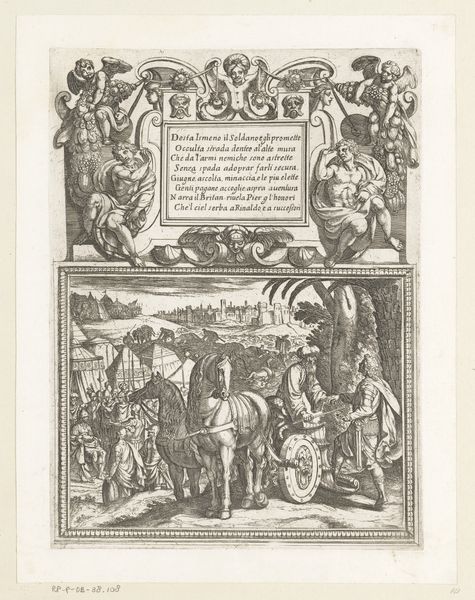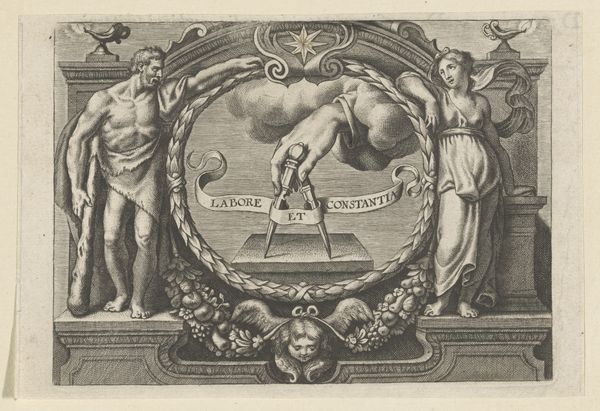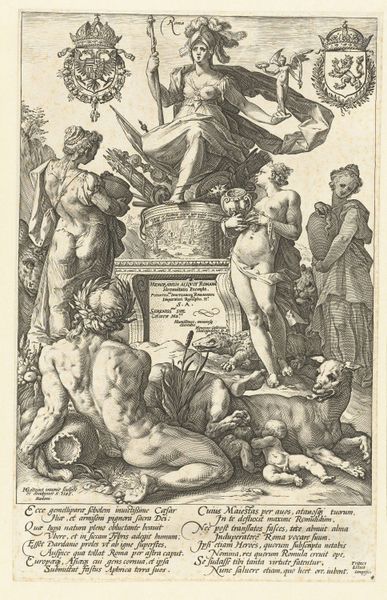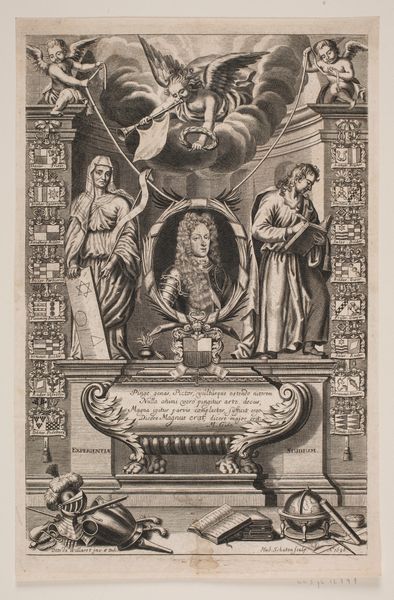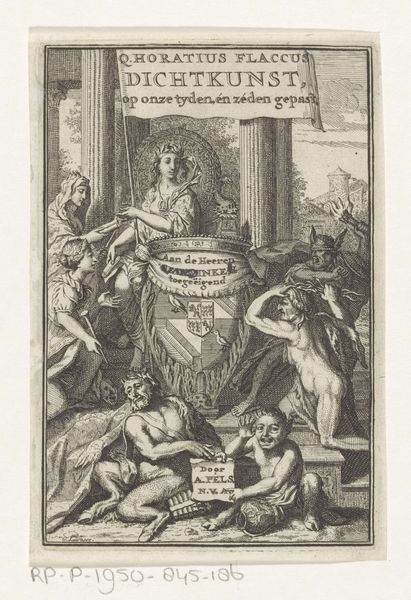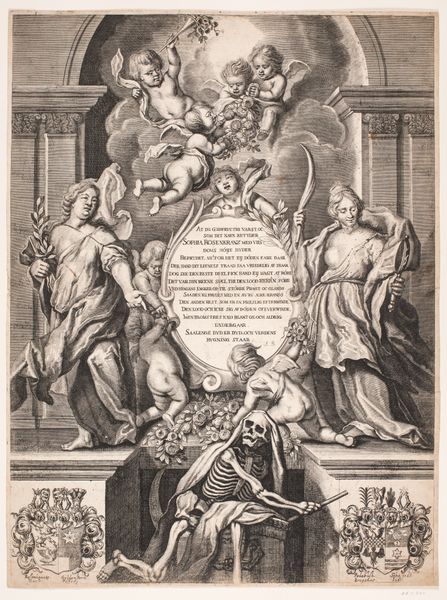
Beeldengroep met de Amsterdamse Stedenmaagd, riviergoden en inaugurele tekst in de Vierschaar van het Stadhuis op de Dam 1655 - 1783
0:00
0:00
print, engraving
#
allegory
#
baroque
# print
#
old engraving style
#
perspective
#
figuration
#
form
#
line
#
cityscape
#
history-painting
#
engraving
Dimensions: height 313 mm, width 430 mm
Copyright: Rijks Museum: Open Domain
Curator: Ah, here we are with “Beeldengroep met de Amsterdamse Stedenmaagd, riviergoden en inaugurele tekst in de Vierschaar van het Stadhuis op de Dam”, a print by Hubert Quellinus, dating back to somewhere between 1655 and 1783. I always find it fascinating that something so intricate was created with engraving techniques! What do you make of it? Editor: It’s quite elaborate, isn’t it? There’s almost too much going on, but it's mesmerizing. All the symbolic elements… it feels very grand, almost theatrical. What are your thoughts on its historical context, particularly given the range of dates? Curator: The layering of time is crucial here. It depicts a monument, doesn’t it? An allegory that represents Amsterdam at a pivotal moment—the construction of the new Town Hall and the declaration of freedom after eighty years of war. And those lions… don’t they feel almost regal and imposing? Almost as if you were standing within the Hall itself, amidst these impressive allegorical figures. Editor: Definitely imposing! What about those river gods at the bottom? They seem to ground the Stedenmaagd in something tangible, the waters that were essential to the city. Are they typical figures in depictions like this? Curator: Precisely! They are there to demonstrate that Amsterdam’s power, prosperity, and wealth stemmed from maritime dominance. Amsterdam was on the make in 1655! By the 1780s things looked quite different; there was great unease and growing division between factions. You’re right, though, there’s a tension there, isn't there? This visual language of allegory does feel staged somehow, like an impressive facade that risks veiling complexities. It makes you wonder what isn’t being said, doesn’t it? Editor: That makes the dates on the piece so important - the narrative is literally in flux as you observe. It makes it more interesting that just seeing something beautiful from afar. Curator: Absolutely! It encourages a deeper dig, beyond the immediately visible spectacle. Editor: I'll be sure to look at prints in the same way! Curator: It's not just about aesthetics, it's about history speaking through the language of symbols, constantly shifting!
Comments
No comments
Be the first to comment and join the conversation on the ultimate creative platform.
